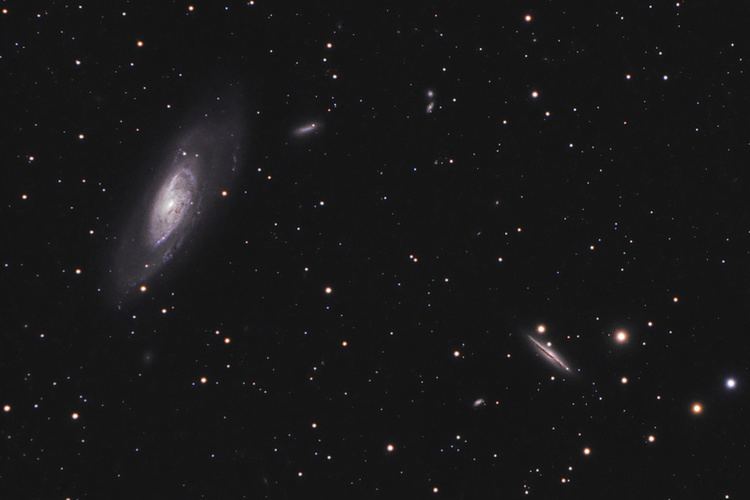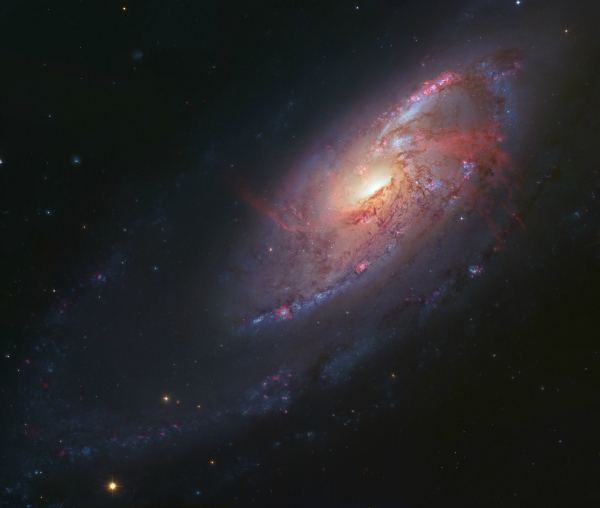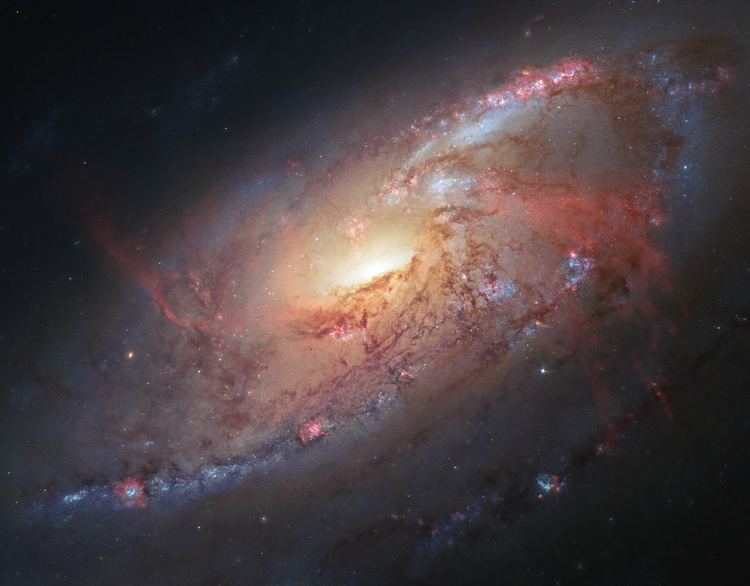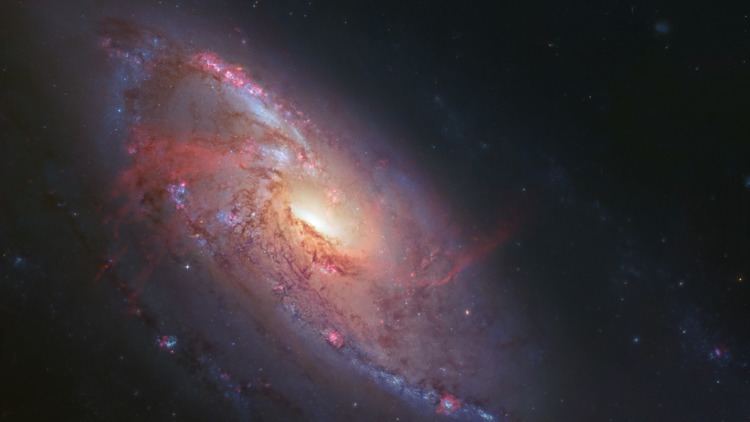Right ascension 12 18 57.5 Redshift 448 ± 3 km/s Type SAB(s)bc Magnitude 8.4 | Declination +47° 18′ 14″ Apparent magnitude (V) 9.1 Apparent mass ~190 billion M☉ | |
 | ||
Distance 23.7 ± 1.5 Mly (7 ± 0.5 Mpc) Similar Messier 105, Messier 102, Pinwheel Galaxy, Messier 107, Messier 108 | ||
Messier 106 a most unusual spiral galaxy hubblecast 62 esa hubble space science hd video
Messier 106 (also known as NGC 4258) is an intermediate spiral galaxy in the constellation Canes Venatici. It was discovered by Pierre Méchain in 1781. M106 is at a distance of about 22 to 25 million light-years away from Earth. It is also a Seyfert II galaxy. Due to x-rays and unusual emission lines detected, it is suspected that part of the galaxy is falling into a supermassive black hole in the center. NGC 4217 is a possible companion galaxy of Messier 106. A Type II supernova was observed in this galaxy in May 2014.
Contents
- Messier 106 a most unusual spiral galaxy hubblecast 62 esa hubble space science hd video
- Zooming in on unusual galaxy messier 106 esa hubble space telescope science hd video
- Characteristics
- References

Zooming in on unusual galaxy messier 106 esa hubble space telescope science hd video
Characteristics
M106 has a water vapor megamaser (the equivalent of a laser operating in microwave instead of visible light and on a galactic scale) that is seen by the 22-GHz line of ortho-H2O that evidences dense and warm molecular gas. These water vapors give M106 its characteristic purple color. Water masers are useful to observe nuclear accretion disks in active galaxies. The water masers in M106 enabled the first case of a direct measurement of the distance to a galaxy and thereby providing an independent anchor for the cosmic distance ladder. M106 has a slightly warped, thin, almost edge-on Keplerian disc which is on a subparsec scale. It surrounds a central area with mass 4 × 107M⊙.

It is one of the largest and brightest nearby galaxies, similar in size and luminosity to the Andromeda Galaxy.

M106 has also played an important role in calibrating the cosmic distance ladder. Before, Cepheid variables from other galaxies cannot be used to measure distances since they cover ranges of metallicities different from the Milky Way's. M106 contains Cepheid variables similar to both of the metallicities of the Milky Way and other galaxies' Cepheids. By measuring the distance of the Cepheids with metallicities similar to our galaxy, astronomers are able to recalibrate the other Cepheids with different metallicities, a key fundamental step in improving the distances to other galaxies in the universe.


